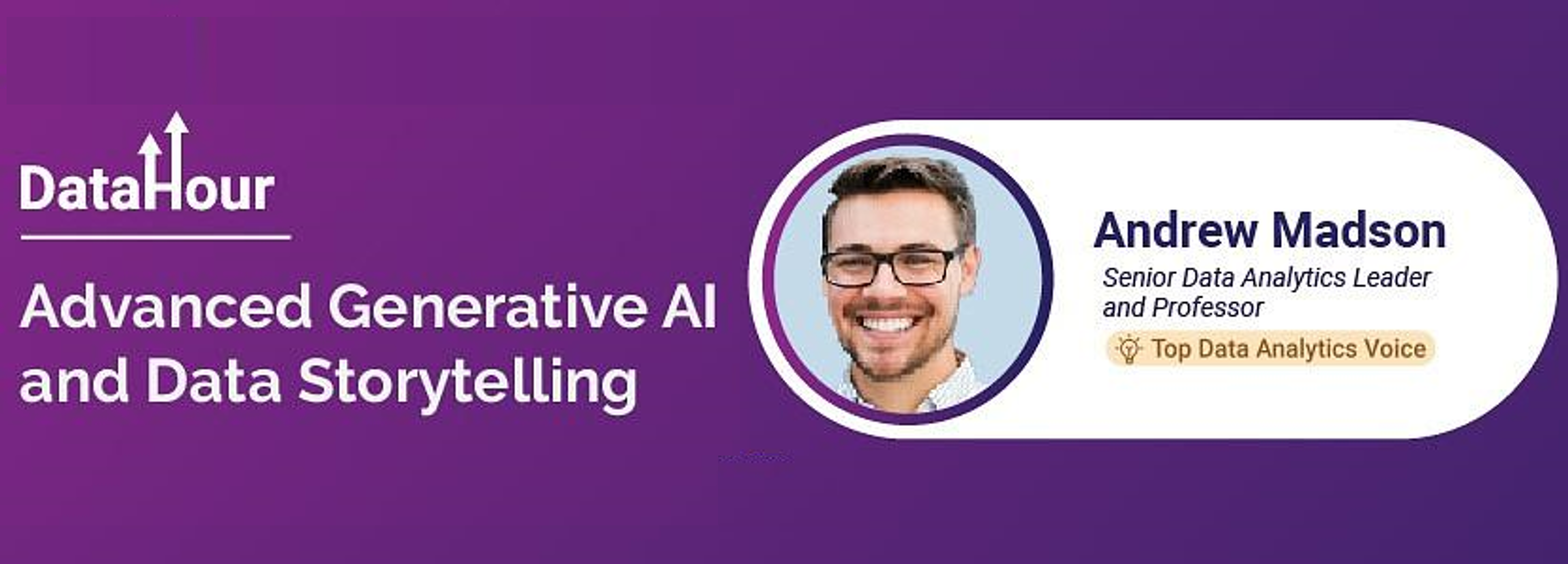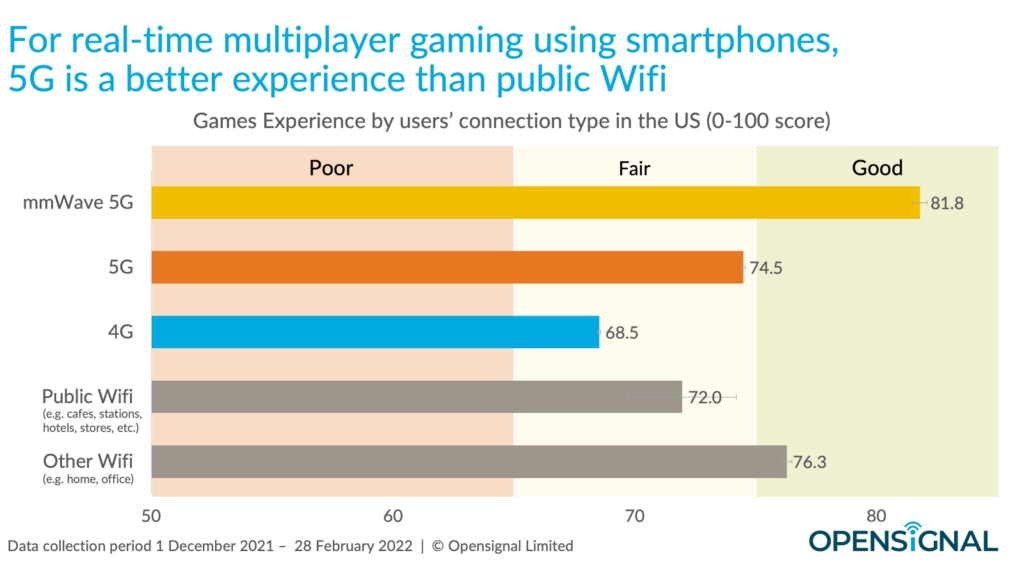Introduction
The world of data analytics is evolving rapidly, with Generative Artificial Intelligence (GAI) leading the charge. This innovative technology is not just about processing data; it’s about creating something entirely new, revolutionizing the way we tell stories with data and conduct analyses. In a recent session, I delved into the fundamentals, architectures, and potential impact of this cutting-edge technology. Here’s a concise summary of what we discussed.

Learning Objectives:
- Understand the fundamentals of generative AI.
- Learn various data storytelling techniques with generative AI.
- Acknowledge the ethical implementation of generative AI in data analytics.
Understanding Generative AI
Generative AI is a subset of artificial intelligence that focuses on creating new content. Unlike traditional AI, which relies on historical data for predictions, generative AI generates new content across visual, audio, and text domains. Various architectures, such as Generative Adversarial Networks (GANs), Variational Autoencoders (VAEs), and Autoregressive Models, define this field.

GANs utilize two neural networks, a generator, and a discriminator, to generate data that mimics real data while distinguishing between authentic and generated data. VAEs have a similar generative purpose but operate differently. Autoregressive Models like ChatGPT, based on Transformers, are commonly used in AI models today.
These models generate data sequentially, predicting the next sequence element based on previous elements, providing a strategic advantage in leveraging AI effectively.
Data Storytelling: Uniting Generative AI and Analytics
Data storytelling is crucial in data analytics. While data collection and analysis are important, the presentation phase is where the impact lies. Crafting a narrative, creating visuals, and ensuring logical explanations are essential in effective storytelling. Generative AI can significantly enhance the initial stages of this process.
Storytelling in data presentation involves engaging with stakeholders, understanding their needs, and presenting findings to facilitate decision-making. Despite its importance, this phase is often overlooked in analytical training programs, highlighting the need for a focus on effective communication of data insights.
Case Study: Generative AI Driving Business Efficiency Narratives
In this case study, GPT-4 demonstrates how it can assist analysts in refining their presentation strategies by providing insights and suggestions. By leveraging ChatGPT to address specific questions, analysts can enhance their narrative and presentation approach to drive business efficiency.

Generative AI acts as a brainstorming partner, offering guidance and ideas to analysts, allowing them to refine their strategies effectively. This collaboration between AI and analysts can lead to enhanced data analytics and storytelling, driving business efficiency.
Advanced Data Analysis with GPT-4
The advanced capabilities of GPT-4 offer a range of possibilities. In my experience, I have found ChatGPT to be a reliable choice for its precision and trustworthiness. While other AI models like LlaMA exist, each has its strengths. Choosing the right AI model depends on specific requirements and objectives.

Evaluating Overspending with AI and Prototype Speed
AI accelerates the analysis of overspending by enabling rapid prototyping. While traditional methods like Python or SQL can perform similar tasks, AI expedites the process, emphasizing the need for thorough verification and review of results to ensure accuracy.

Analyzing ROI and Crafting Strategic Cuts with ChatGPT
Calculating Return on Investment (ROI) requires specific methodologies. Instructing ChatGPT on ROI calculations for different expenditure areas can reveal insights into efficiency and potential areas for optimization. Strategic evaluations based on AI-generated insights can guide decision-making processes.
Generative AI and Visual Data Representation
AI-generated visuals such as charts and graphs aid in exploratory data analysis, prompting strategic thinking. It’s essential to ensure that the visual representations align with the data interpretation needs to facilitate effective decision-making.

Privacy and Ethical Considerations in Leveraging AI
Generative AI has the ability to access diverse data sources and adapt to various datasets. However, when dealing with sensitive information, particularly personally identifiable data, precautions must be taken to protect privacy. Ethical considerations, including bias in AI systems and misinformation, must also be addressed to ensure fair and unbiased analyses.

While AI enhances analytical capabilities, the responsibility for accurate and ethical usage lies with data professionals. Validating AI-generated information is essential to maintain credibility and ethical standards in data analysis.
Integrating AI into daily workflows requires careful consideration of ethical implications, responsibility, and potential consequences. By harmonizing AI’s capabilities with ethical decision-making, data professionals can leverage AI effectively while upholding ethical standards.
Conclusion
Generative AI is reshaping data analysis by fostering innovation and redefining storytelling, ushering in an era of enhanced efficiency and ethical considerations. By integrating Generative AI into data analytics, we can enhance our processes while maintaining accountability and accuracy. Navigating the complexities of Generative AI requires a holistic approach to harness its potential responsibly and ethically.
This comprehensive overview highlights the transformative power of Generative AI in data analysis. By embracing this technology, businesses can optimize their efficiency and make a significant impact in the realm of data analytics. I hope this guide sheds light on the potential of Generative AI to revolutionize data analytics and drive business success.
Key Takeaways:
- AI models like GPT-4 offer innovative solutions for data access, analysis, and decision-making, shaping strategic outcomes and facilitating complex evaluations.
- Uniting Generative AI and analytics in storytelling is essential for effective communication of data insights to stakeholders.
- Verification of AI-generated information is crucial to ensure ethical and accurate data analysis practices.
Frequently Asked Questions
A. Generative AI creates novel content, unlike traditional AI that predicts based on historical data. It synthesizes visuals, audio, and text, shaping storytelling and strategic decision-making.
A. Generative AI content may convincingly mimic incorrect data, emphasizing the need for rigorous verification. AI systems often carry biases, requiring vigilance to ensure fair and unbiased analyses.
A. No, while AI significantly enhances analytics, the responsibility for accurate usage rests on data professionals. AI serves as a tool, requiring validation to maintain credibility and ethical standards in analysis.
About the Author: Andrew Madson
Andrew Madson is the Senior Director of Data Analytics at Arizona State University and a seasoned university professor with over 18 years of experience. His expertise spans machine learning, AI governance, and strategic data analytics, having led data initiatives at multiple Fortune 500 companies. As an educator, Andrew has shared his knowledge with thousands of graduate students in data science and analytics.
DataHour Page: https://community.analyticsvidhya.com/c/datahour/advanced-generative-ai-and-data-storytelling
LinkedIn: https://www.linkedin.com/in/andrew-madson/



